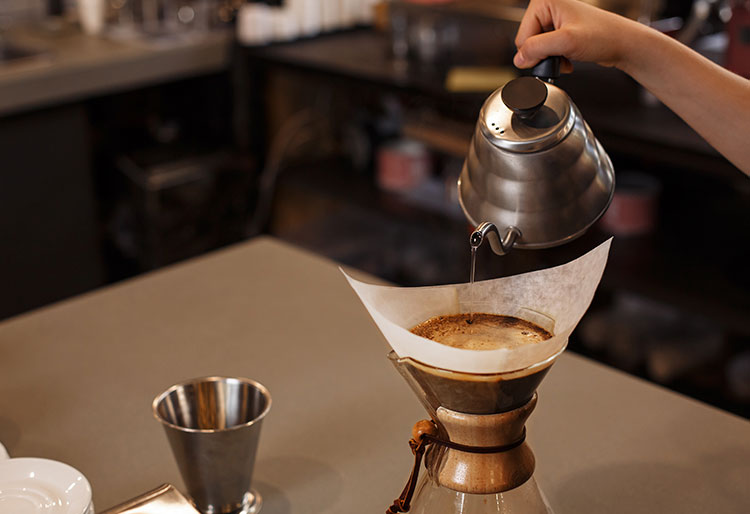Types of coffee makers: different ways to make coffee
Italian coffee maker, with capsules, an electric coffee maker, a filter, a French press… We will tell you about the different types of coffee makers there are so that you can prepare delicious coffee.
TRIED AND TESTED
Share

How to make coffee in an Italian cafetiere
Also known as a mocha, it was invented in 1933 and, until recently, this is the cafetiere that was almost exclusively found in every home. It is a metal cafetiere consisting of three parts: a lower part which is the pan and contains a safety valve; then, a metal filter in the middle, and an upper part where the coffee is placed. The pressurised boiling water passes through this via the filter containing the coffee, which is separated from the upper part by another filter. This coffee maker needs a fine to medium ground coffee so that it can extract all the flavour and aroma. The coffee should not be compressed too much as this may cause a blockage, and it should not be left on the heat for too long so that the coffee does not burn.
How to make coffee in a filter coffee maker
Drip or filter coffee makers are ideal for preparing a light or Americano coffee. A fine or medium ground coffee is recommended. There are various types, but they all share the use of an upper filter where the coffee is placed and through which the water passes. The coffee is released as a drip:
- Electric filter: two soup spoons of coffee are recommended for each 180 ml of water (or cup that you want to make). The water is not poured over the coffee, but into its own container. Because it is electric, it will heat up the water first and then pour it into the filter. The coffee will then drop into a jug that is placed on a hotplate and which normally keeps the coffee hot. This type of coffee maker is designed for making large quantities of mild, light coffee at one time.
- Chemex coffee maker: its shape is reminiscent of an hourglass and it requires a medium ground coffee. It is ‘manual’ and requires you to boil the water, let it rest for 45 seconds after boiling, and then putting it in a pot. After this, you add the water to the ground coffee using circular movements extending out from the centre to the outer edges.
- V60: it is known by this name because the container where the coffee is placed has a V shape and a 60-degree angle. It has only one drip hole.
- Kalita: the upper container has a flat base and three drip holes, and it usually has an undulating filter. It makes a more full-bodied coffee.
- Japanese syphon : this combines immersion and drip. It consists of two pieces placed one on top of the other in a spherical shape. The lower part contains an alcohol wick used to create a flame, although there are also models with electric hotplates. The steam makes the water rise into the upper container through a tube. Then, as a consequence of negative pressure, the liquid returns to the lower container.

How to make coffee in express coffee makers
The express coffee maker is a classic item of equipment in bars. This is the Italian coffee maker that makes the water at high pressure pass through a filter containing finely ground coffee and it provides a dense and loaded infusion. There is a home version which also incorporates a steam wand to the side with which to heat milk and make it creamier
Capsule coffee makers
Basically, this works like an express coffee maker, but instead of you adding the ground coffee it comes pre-prepared in a single dose capsule, which makes this system much more automatic. As you can choose the type of coffee, such as, ristretto, intense, decaffeinated… there are many possibilities.
How to make coffee in a French cafetiere
Also known as a plunger, it was invented in 1850 and the coffee is obtained through immersion. It consists of a circular glass container covered by a plunger with a permeable filter which, on plunging, lets the liquid pass through it without the solids. It is used by heating water in a pan, and when it boils, some water is placed in the cafetiere to warm it up and the remainder is left in the pan, then the coffee is added according to taste. The coffee is coarsely ground. It is stirred until frothing point is reached. Then the water in the cafetiere is removed and the coffee mixture is placed in it, leaving it to rest for ten minutes. After this, it is covered by the plunger, which is pressed downwards towards the base. The result is a dilute coffee, but which has flavour







